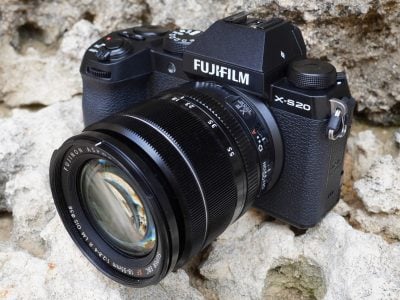Panasonic Lumix DMC-FZ18
-
-
Written by Gordon Laing
Panasonic Lumix DMC-FZ18 image stabilisation
Panasonic Lumix DMC-FZ18 features
Lenses / Screen and menus / Sensor and processing / anti-shake
Like all of Panasonic’s current range, the Lumix FZ18 is equipped with Optical Image Stabilisation (OIS) to counteract camera shake – and you’ll certainly welcome the facility with a zoom which extends to an equivalent of 504mm.
 |
As with other Panasonic models, the FZ18 features three different OIS options, accessed on this model from the on-screen function menu. Mode 1 applies stabilisation constantly which can greatly aid composition, especially at longer focal lengths. Mode 2 only applies the stabilisation as you take the picture, which has the potential to be more effective since the system always starts from a central position, although you won’t see the effect as you compose the image. Finally, the third option switches the OIS off altogether for use with tripods. Note OIS is also available when recording movies, but only with Mode 1.
To put OIS to the test we zoomed the FZ18 all the way into an equivalent of 504mm and took a series of handheld photos of a house with each OIS mode. We started each sequence at 1/125 and reduced the shutter speed by one stop at a time until 1/8. Traditional photographic advice would suggest a shutter speed of 1/500 to eliminate camera shake at this focal length without stabilisation, or 1/60 with a ‘3-stop’ stabilisation system.
Panasonic Lumix DMC-FZ18 Mega OIS off |
Panasonic Lumix DMC-FZ18 Mega OIS Mode 1 |
Panasonic Lumix DMC-FZ18 Mega OIS Mode 2 | ||
 |  |  | ||
| 4.6-82.8mm at 82.8mm, 1/30, 100 ISO | 4.6-82.8mm at 82.8mm, 1/30, 100 ISO | 4.6-82.8mm at 82.8mm, 1/30, 100 ISO |
We found a minimum shutter speed of 1/125, but more usually 1/250, was required to eliminate camera shake without OIS when the FZ18 was fully zoomed-in. Activating OIS modes 1 or 2 allowed us to typically handhold the same shots at 1/60 without shake, or in a handful of occasions, at 1/30. Taking an average of these results would show the FZ18 delivering two to three stops of compensation.
With previous Panasonic models we’ve rarely been able to illustrate any benefit to using OIS Mode 2 over Mode 1, but with the FZ18 differences did emerge when the system was at its limits. Above are crops taken from the 1/30 exposures using each OIS mode. The crops are taken directly from the original images and reproduced here at 100%.
They clearly show OIS was unable to completely remove camera shake at this relatively slow shutter speed, but they do show Mode 2 compensating slightly better than Mode 1. The crop without OIS is very shaky indeed.
Ultimately we prefer using Mode 1 in practice though as you see the stabilising effect during composition, which can greatly help at longer focal lengths. It’s nice to have the option of Mode 2 though and as seen above, it offers genuine benefits on some occasions. So we’d stick with Mode 1 for general use, but if you find camera shake is still creeping in, try a second shot with Mode 2 to see if it’s any better. One issue which is apparent from the crops above though is visible noise even at 100 ISO when viewed at 100%. You’ll sadly be seeing a lot more of that in our results and gallery pages. But the important thing here is that the FZ18’s optical stabilisation is very effective. Now let’s take a look at how the FZ18 performs in practice against it’s main rival in our FZ18 outdoor resolution results.




